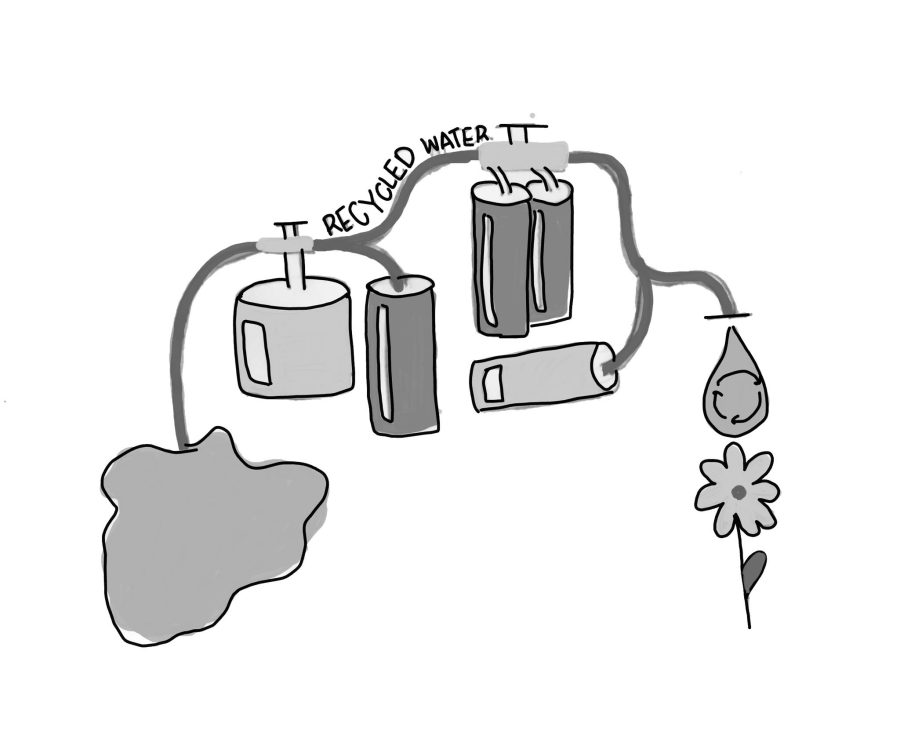In an effort to create higher-quality recycled water and mitigate the ongoing drought, the City of Palo Alto and Valley Water plan to build multiple water treatment and purification facilities.
Palo Alto Public Works commissioned a wastewater treatment plant to remove salts and reduce dissolved solids from recycled water, according to Assistant Director of Public Works Karin North.
“The smaller salt removal facility would take out the salts and then blend it with existing recycled water and create higher quality water,” North said. “The enhanced recycled water would drop the average concentration of dissolved solids in half.”
North said the low salt percentage of the recycled water will make it suitable for the irrigation of even sensitive plants.
“Because it’s a higher quality water, it does not cause any harm to the plants receiving the recycled water,” North said. “We’ve been applying that water to sensitive species and trees.”
In an effort to repurpose an outdated sewage treatment plant on Embarcadero Way, North said the salt removal facility will be built on top of it.
“Essentially, in the next 10 years, we are rebuilding the entire sewage treatment plant,” North said. “We’re recording tanks, routing piping, taking tanks down and trying to reinforce them, putting in new technology and putting those tanks back online.”
North said the new salt removal facility will improve the efficiency of existing treatment plants, dramatically increasing the amount of water that can be filtered and blended into enhanced water.
“When we blend (the filtered water with recycled water), our flows would increase from 4 million gallons of water per day to around six,” North said.
In addition to the salt removal facility, Gary Kremen, a board member and director at Valley Water, said The Santa Clara Valley Water District plans to build a regional purification facility in Palo Alto near San Antonio Road.
“This regional project is about taking wastewater fluid and turning it into water that can be used for not only watering redwood trees, but turning it into indirect potable reuse water,” Kremen said.
Kirsten Struve, an Assistant Officer of the Water Supply Division, said the purification facility uses microfiltration and reverse osmosis to clean wastewater.
While the two plants have different purposes, North said they will work together to provide potable recycled water.
“About half of the treated water from the salt removal facility goes to the Valley Water plant, and then they would purify it further for drinking water,” North said.
Struve said Valley Water hopes to start construction in 2024 and have the plant fully operational by 2028. According to Kremen, the project is being expedited to combat the drought.
“Some projects take 20-30 years sometimes, but we’re going pretty quick because of the drought,” Kremen said.
While Valley Water is making progress on its plant, North said the estimated budget of the salt removal facility surged from $20 million to around $53 million.
“We originally estimated the price in current dollars, (but) now we have to scale it based on inflation,” North said. “We knew it was going to be higher. I just didn’t expect it to go up that high.”
But Kremen said money shouldn’t be an issue because it looks like the federal government will be able to assist more with water-related projects as the issue of water conservation becomes increasingly important.
“There’s been positive news that looks like the federal government has realized that recycling water is a good thing,” Kremen said. “So there might be some money coming in because of that.”
And Kremen said he thinks the severity of the drought in California makes these potential water treatment plants a crucial defense against the effects of climate change.
“Our state suffers periodic droughts, and it’s getting worse with climate change as there’s less precipitation,” Kremen said. “We need to have many alternative water supplies.”


